One of my colleagues alerted me to a blog post on tree myths currently making the rounds on social media. As a myth debunker myself I was particularly intrigued by the last myth “Root Pruning Stimulates Root Branching:”
“When planting a tree’s root ball, It is very tempting to cut back on roots that are circling the ball. It is very often thought that a dense root ball will stimulate new feeder root growth…but that is not the case.
“Don’t worry about encircling roots as they will correct that on a new site.
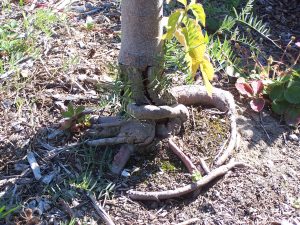
“Most new root growth occurs at the end of existing roots. Root pruning is often done at the nursery to accommodate packaging and to resume growth before the final sale. If you are planting the tree at its final site, it may be best that you gently break up the root ball but never prune root tips.”
Most surprising of all was the statement at the end of the post which cited an Extension publication by Dr. Ed Gilman at the University of Florida.
Let’s straighten this out (pun intended).
First of all, root pruning DOES stimulate new root growth. It’s just like the response you see when you prune the crown of a plant – the buds below the cut become active and develop into new shoots. There are growing points behind the cut ends of roots which act in the same manner.
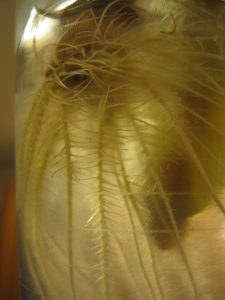
Second, circling roots will NOT correct themselves after planting. If they are flexible, you can tease them out to radiate from the trunk. If they are woody, you will have the same luck straightening them as you would in straightening a dowel. If anything, it’s going to break. Not bend.
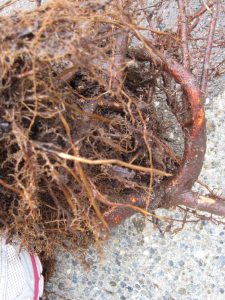
Finally, root elongation (growth) DOES occur at the end of existing roots – IF they are intact. If they’ve been cut, then we’re back to my first point.
This is basic plant physiology. The response of roots to pruning has been known for several decades. So how could the University of Florida publication be so wrong?
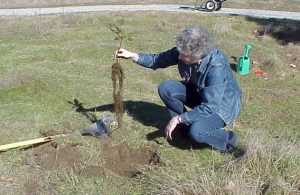
I was able to track down the publication “Dispelling Misperceptions About Trees“. It was written in 1991 and has since been archived – meaning that it’s not considered to be a current source of information any longer. But let’s take a look at what it says, especially the underlined portion:
“Root pruning does not stimulate root branching all the way back to the trunk. Roots are often pruned before moving a tree in hopes of creating a denser root ball.However most root growth after root pruning occurs at the end of the root just behind the root pruning cut, not back toward the trunk. Therefore, dig the root ball of a recently root pruned tree several inches beyond the location of the root pruning. Root pruning should be conducted 6 to 10 weeks before moving the tree. Root pruning more than 10 weeks before moving the tree will reduce the advantages of pruning, because regenerated roots will quickly grow outside of the root ball.”
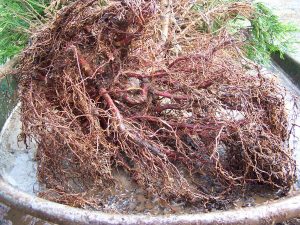
This says exactly what I stated in my first point: root pruning stimulates new root growth – which is root branching.
Dr. Gilman’s document goes on to say:
“Roots circling around a container do not continue to grow in a circle once the tree is planted in the landscape. Roots frequently circle within the perimeter of a container several times before the tree is planted into the landscape. The portion of the root which grew in the container does not straighten out, but new growth on this root will not continue to circle.”
So yes! You DO need to worry about those circling roots!
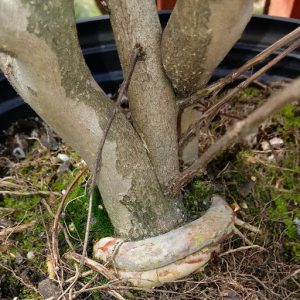
In 1991 Ed was an assistant professor at UF and went on to write hundreds of Extension publications and research articles during his career. And in 1991 he was well aware of how root pruning affects root growth.
The moral to this story: read your sources carefully and cite them accurately. And if what you read doesn’t jibe with the current state of science, ask questions!
As I read your post I was thinking “it sure would be nice to read the context of Dr. Gilman’s statement”. I was delighted to read further that great minds think alike. Thank you for taking the time to research it. Context is everything. Dr. Gilman obviously was on the right track, even so many years ago. Unfortunately, in today’s sound bite culture, it is asking a lot of people to read the entire article to gain context!
Consider the source–a registered forester may know how timber grows, but not how urban trees grow. His 1 and 2 are accurate enough, but 3-5 have major problems.
And it’s good to hear Dr. Chalker-Scott acknowledge that “It’s just like the response you see when you prune the crown of a plant – the buds below the cut become active and develop into new shoots.”
So, reducing a branch does NOT result in a flush of sprouts from the cut surface, unless the cut is so large that it causes that ‘panic’ reaction. Specified reduction causes trees to grow downward, not outward.
This would be a good myth to bash next!
I don’t know any plant scientist who thinks that sprouts arise from the cut surface of a branch, Guy. Can you give a link to an online site that states this? Because yes, that would be a good myth to bust.
Semantics. Obviously in deciduous trees cuts stimulate adventitious buds to become active .
Ron, I’m not clear where you intend this comment to go. Semantics where?
When Ed Gilman is wrong he doubles down and swears to it.
Wrong where?